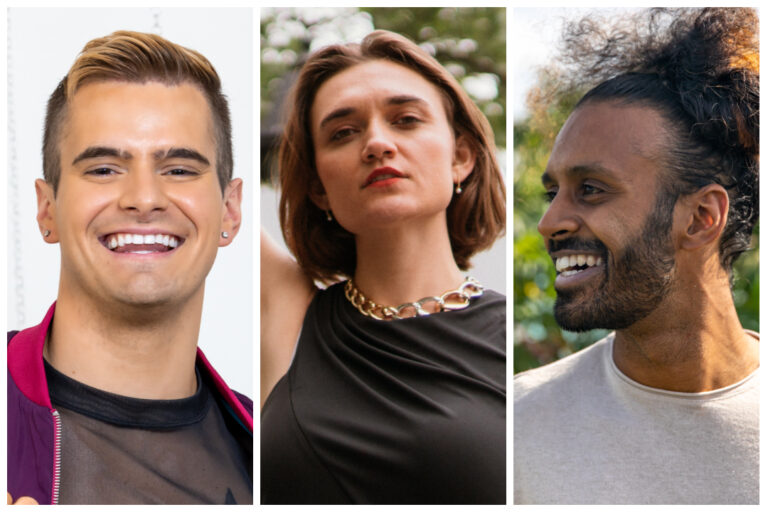Event creators who sustain thriving communities often start from scratch. It’s a mixture of strategies, programming, dedication, and guts that make steady growth — and significant impact — possible.
During Eventbrite’s RECONVENE Sessions event How I Built My Community From the Ground Up, three expert event organizers shared how they forged dedicated communities from scratch.
Watch the full event recording — featuring the Fitness Marshall, #HalfTheStory, and Afro Soca Love — below:
Read on for a teaser of key takeaways from each of the event’s speakers. Want more in-depth insights? Watch the full video above. For additional tips from Eventbrite’s ongoing RECONVENE events series, visit our recaps hub.

Caleb Marshall, the Fitness Marshall
The Fitness Marshall leads fun dance workouts on YouTube and at live cardio concerts around the globe.
1. Stay consistent with core values and offerings
When Caleb Marshall launched his fitness platform, he knew he was creating a brand that would always follow him — so he made it recognizable. He started with simple foundational blocks: using a 3-minute song, featuring two dancers in the background, and wearing a pair of camo pants. That way, whenever someone stumbled upon one of his videos, they knew who it belonged to. Though he’s evolved since then, he’s always maintained his core values and offerings.
2. Augment with extras for loyal followers
Though Marshall’s YouTube videos are consistently short, he offers 30- and 60-minute paid livestream videos for followers who crave more. That way, there’s something for every audience member – and the particularly dedicated get more of what they want.
3. Don’t be afraid to fail
At one point, Marshall tried posting strength and stretching videos, but he realized quickly that they didn’t spark joy inside of him – they felt like a chore. So he leaned back into what works best for him. “I was never afraid to fail,” he says. “Audiences are very forgiving and appreciate people experimenting.”

Larissa “Larz” May, founder, #HalfTheStory
#HalfTheStory is a non-profit designed to improve the next generation’s relationship with social media.
4. Foster relationships with people who have a bigger audience than you
That’s how you grow, Larissa “Larz” May says. For example, #HalfTheStory partnered with digital influencers who were extremely popular with teens to host in-person events. These heavily online populations were able to disconnect and gather together in an unfiltered environment – simultaneously becoming familiar with and joining the #HalfTheStory community.
5. Make sure your community feels prepared
As soon as someone purchases a ticket, the #HalfTheStory team makes sure they’re aware of the group’s values and goals. Then, the day before the event, patrons are sent details like dress-code and food and drink options. Those details go a long way: “It’s like you’re inviting someone over to your house,” May says. “There is an element of hospitality that you have to have for your guests.”
6. Conduct post-event quantitative and qualitative research
It’s crucial to understand the impact of your event, as well as how you can improve and further benefit your community, May says. “The most important guest you have is the one who’s right in front of you,” she adds. “It’s not the one you don’t have who you want to come to a future event.”

Myron “MAGA” Chandran, founder, Afro Soca Love
Afro Soca Love is a clothing and community events company that aims to unite the world through music, commerce, and fashion.
7. Connect to your cultural identity to start building community
When Myron Chandran was in college, he got involved with a variety of cultural organizations that tied back to his connection to both the Caribbean Islands and Africa and its diaspora. Building his initial audience from within that community – the people around him, who understood and could relate to him – helped him begin to build a loyal audience.
8. Use social-media advertising
Chandran handed out burned mix tapes and CDs to people he met. That allowed him to “start a conversation so they could see my personality and like me enough to come and see [my events],” he says. He soon realized he could have those same conversations online by using social-media advertising, which allowed him to reach people who weren’t yet in his network, creating a larger, global audience.
9. Remember: Events are still the strongest way to connect with your audience
Regularly gathering in person is the “only way you can get in front of them … have a conversation, and allow them to get to know you,” Chandran says. Creating an intimate experience that helps people feel they are part of something bigger themselves is key to building, and maintaining, a dedicated community.





